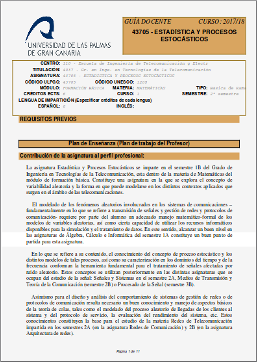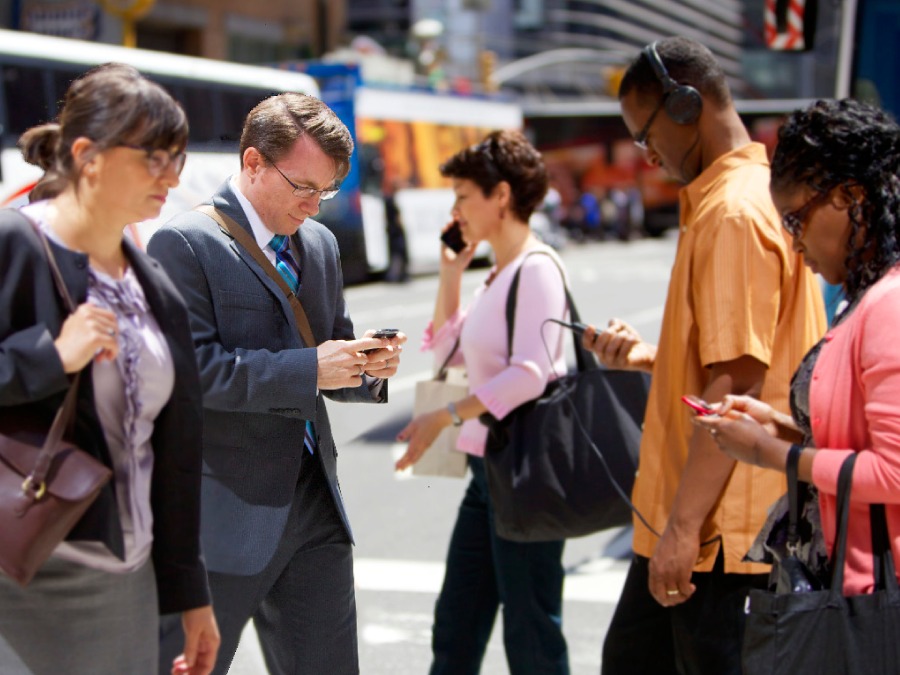class: center, middle, inverse, title-slide # Statistics and Random Processes ## <br><br><br> ### <br><br><br><br>Degree in Engineering and Telecommmunication Technologies<br>2017-18 --- layout: true background-image: url(http://www.dma.ulpgc.es/profesores/personal/stat/uni2.png) background-size: 50% 75% --- background-image: url(http://www.dma.ulpgc.es/profesores/personal/asp/images/TelecoHome.jpg) background-size: cover background-position: 15% 45% class: inverse, bottom, left # 1. Summary of <br> Teaching Project --- ### Virtual Campus: notes for following the subject .pull-left[ [](https://www2.ulpgc.es/aplicaciones/proyectosdocentes/pdf.php?id_proyecto=51867&NUEVA=1) * [Teaching Project](https://www2.ulpgc.es/aplicaciones/proyectosdocentes/pdf.php?id_proyecto=51867&NUEVA=1) ] -- .pull-right[ [](http://www.dma.ulpgc.es/profesores/personal/stat/TELECO/Estadistica_y_Procesos_Estocasticos_v2014.pdf) * [Subject guide](http://www.dma.ulpgc.es/profesores/personal/stat/TELECO/Estadistica_y_Procesos_Estocasticos_v2014.pdf) ] --- ## Lecturers <img src="http://www.dma.ulpgc.es/profesores/personal/stat/logoDMAtransp1.png" alt="logo DMA" height="80" style="float:right"> <br> -- * __Problems group T1__: Begoña González Landín e-mail: .blue[bego.landin@ulpgc.es] -- * __Theory group T2 and laboratory practices T1 y T2__: Carmen Nieves Hernández Flores e-mail: .blue[carmennieves.hdezflores@ulpgc.es] -- * __Problems group T2__: Juan Rocha Martín correo: .blue[juan.rocha@ulpgc.es] -- * __Theory group T1__: Angelo Santana del Pino correo: .blue[angelo.santana@ulpgc.es] --- # Evaluation system ## Ordinary call -- .red[__Source 1.1.__] Assistance to the lectures and the laboratory (5%) -- .red[__Source 1.2.__] Laboratory activities. (15%) -- .red[__Source 1.3.__] Midterm and Final exams (40% midterm exam and 60% final exam).(80%) -- In the case of the exam grade to be less than 5, the overall mark of the subject will be this one. Otherwise, the overall score will be obtained by the following criteria: `$$0.05\cdot\textrm{Source1.1} +0.15\cdot\textrm{Source1.2}+0.8\cdot\textrm{Source1.3}$$` --- # Evaluation System ## Special Calls -- .red[__Source 2.1.__] Performing a written test aimed at solving problems. (15%) -- .red[__Source 2.2.__] Performing a final exam of the subject. (85%) -- In the special calls students must attend to a final exam. To add the rest of the sources, the exam mark must grade at least 5. In that case, the criterion used is: `$$0.15\cdot\textrm{Source 2.1}+0.85\cdot\textrm{Source 2.2}$$` Otherwise, the obtained mark is the grade of the exam. --- ## Laboratory Laboratory practices will be performed in the classroom and will consist in the resolution of problems whose solution should be uploaded to the virtual campus. -- * __Practice Nº 1:__ Week from 19 to 23 february, 2018. -- * __Practice Nº 2:__ Week from 12 to 16 march, 2018. -- * __Practice Nº 3:__ Week from 9 to 13 april, 2018. -- * __Practice Nº 4:__ Week from 7 to 11 may, 2018. -- ### Exams -- * __1st midterm exam__ Thursday, march 22, 2018. -- * __Final exam__ May 25, 2018 --- ## Tutorship <img src="http://www.dma.ulpgc.es/profesores/personal/stat/logoDMAtransp1.png" alt="logo DMA" height="80" style="float:right"> <br> ### .red[Ask for appointment by e-mail] -- .blue[Problems group T1:] Begoña González Landín. Tuesdays from 10.30 to 12.30 -- .blue[Theory group T2 and laboratory practices T1 y T2:] Carmen Nieves Hernández Flores. from Monday to Thursday, from 12.30 to 14.00 -- .blue[Problems group T2:] Juan Rocha Martín. Tuesdays and Thursdays from 12.00 to 14.00 -- .blue[Theory group T1:] Angelo Santana del Pino. Monday from 12.00 to 14.00 --- background-image: url(http://www.dma.ulpgc.es/profesores/personal/asp/images/TelecoHome.jpg) background-size: cover background-position: 15% 45% class: inverse, bottom, left # 2. Motivation, contents <br> and objectives --- ## ¿Why this subject? -- .center[ <video src="http://www.dma.ulpgc.es/profesores/personal/asp/Datos/lol.mp4" width="480" height="270" controls autoplay preload></video> ] -- Playing LoL requires: * Have a network that can absorb the traffic generated by the game. * That the connections are fast and without errors (ping <50 ms). * If in addition the game is transmitted by Twich you have to have a good bandwidth available. --- .pull-left[ <br>  ] -- .pull-right[ ### Traffic supported by the network * Telephony * Web navigation * Messaging applications * Social networks * Video and audio streaming * Online multiplayer games * Virtual disks in the cloud * GPS-assisted navigation * Reservations for travel and accommodation. * Internet of things * ... ] --- ### Connections between facebook users  This graph, due to [a Facebook employee](https://paulbutler.org/archives/visualizing-facebook-friends/) shows the connections between users of this application. Probably Twitter, Instagram and online gaming networks show similar profiles. The messaging applications show a more local connection profile. --- ### How do we get all this to work? Requirements * Install a communications network: switchboards, routers, repeaters, cables, antennas, ... -- * Implement signal transmission mechanisms on this infrastructure, with noise filtering and error correction. -- * Implement network management protocols to control traffic. -- * Collect data constantly to keep the infrastructure adequately sized to the needs of each moment. -- * Analyze data on the use of systems and applications: estimate trends, discover new markets, develop new ideas `\(\longrightarrow\)` -red[Big data.] --- ### The role of chance. * Network management protocols .center[  ] Data packets arrive at each node of the network, where must be queued up to jump to the next network node, until they reach the destination. -- - Arrival time, service time and waiting time are __random magnitudes__ - Packet size and number of nodes that must be crossed __are also random__ -- .center[ Teletraffic problems `\(\rightarrow\)` .red[__Queueing theory__] ] --- ### The role of chance: a day in the city .pull-left[   ] .pull-right[ * How many people are there at each moment using mobile phones in different parts of a city? * ¿How are they moving? ¿Do they walk, or go by car? * How long are their conversations? * What kind of traffic are they generating, voice, video, data? * How many antennas do we need? Of what power? How many channels? Where do we place them? * How many fixed lines? What is the user's speed demand? Optic Fiber, coaxial cable?] --- ### The role of chance * Signal processing: signal without noise <br> <audio src="imagenes/sheeran-Photograph.mp3" controls></audio>  --- ### The role of chance * Signal processing: signal with constant noise <br> <audio src="imagenes/sheeranRuido.mp3" controls></audio>  --- ### The role of chance * Signal processing: noise of the previous signal <br> <audio src="imagenes/ruido.mp3" controls></audio>  --- ### The role of chance * Signal processing: noise can take many forms. <br> <audio src="imagenes/sheeranPulse.mp3" controls></audio>  (The image shows only one of the "clicks" that sound in the audio) --- ### Some of the objectives outlined in the teaching project. __1 .__ Know the basics of probability theory. -- __3 .__ To know and to be able of identifying in practice the probability distributions of the random variables adequated to model application problems in Telecommunications. -- __5 .__ Knowledge of Markov chains and their application in the field of telecommunications. -- __6 .__ Distinguish and modelling different queue systems. -- __8 .__ Understand the fundamentals of Spectral Analysis and be able to apply them to problems in the field of telecommunications, in particular to those related to signal processing and filtering. -- __9 .__ Assume the necessity and usefulness of Statistics and Stochastic Processes as a tool in their future professional practice. ---  <br> __In summary: __ the main objective of the subject is to provide future graduates in Telecommunications Engineering with the knowledge and basic tools necessary to understand and adequately model the effect of chance in the areas of their competence. --- background-image: url(http://www.dma.ulpgc.es/profesores/personal/asp/images/TelecoHome.jpg) background-size: cover background-position: 15% 45% class: inverse, bottom, left # 3. Syllabus --- ## Syllabus __Chapter 1. Probability Spaces__ Random phenomena. Different concepts of probability. Sample spaces. Axioms and properties of the probability measure. Probability finite spaces: introduction to combinatorics. Conditional probability. Independence of events. Notable probability theorems. <br> <br> -- __Chapter 2. Random variables__ Concept of random variable and its probability distribution: distribution function. Discrete distributions. Absolutely continuous distributions: probability density function. Moments of a probability distribution. Characteristic function: calculation of moments. Simulation of random variables. --- ## Syllabus __Chapter 3. Random Vectors__ Joint probability distribution of two random variables. Marginal distributions Conditional distributions. Stochastic independence. Linear correlation. Multivariate distributions. Successions of independent random variables. <br> -- __Chapter 4. Markov processes__ Random walks. Markov condition. Homogeneous Markov chains. Transition probabilities matrix. Stationary distributions. Limiting behavior of Markov chains. --- ## Syllabus __Chapter 5. Birth and death Processes__ The homogeneous Poisson process. Pure birth process. Yule process. Birth and death processes. Systems of markovian queues. Equilibrium conditions. <br> -- __Chapter 6. Stationary processes __ Stationarity. Autocovariance and autocorrelation functions. Special processes: purely random, autoregressive (AR), moving average (MA), ARMA and harmonics. Spectral analysis. Linear transformations and filtering problems. --- background-image: url(http://www.dma.ulpgc.es/profesores/personal/asp/images/TelecoHome.jpg) background-size: cover background-position: 15% 45% class: inverse, bottom, left # 4. Last but not least ... --- .center[] ### Practical tips. * Try to keep the subject up-to-date. * Do not be shy, ask what you do not understand! * Use teacher tutorship. * Consult material: books, online content ... * Solve all the problems posed in the guide of the subject. --- background-image: url(http://www.dma.ulpgc.es/profesores/personal/asp/images/TelecoHome.jpg) background-size: cover background-position: 15% 45% class: inverse, bottom, left # ¡¡Cheer up and <br> good luck!!